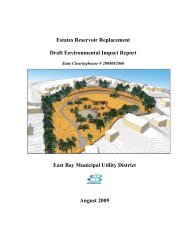FROM: Lisa Sorani, Manager of HR Employee Services LS -
FROM: Lisa Sorani, Manager of HR Employee Services LS -
FROM: Lisa Sorani, Manager of HR Employee Services LS -
Create successful ePaper yourself
Turn your PDF publications into a flip-book with our unique Google optimized e-Paper software.
POSSIBLE OUTCOMES: ALTERNATIVE SCENARIO 2<br />
r<br />
• The background provided over the past few slides lays out the foundation for concern over the<br />
future course <strong>of</strong> interest rates<br />
• Currently the cost to the Government to finance its debt (its debt servicing cost) has been<br />
relatively muted and unchanged over the past 20 years<br />
• This has been a boon for the Government as it has not had to pay the price for increased<br />
borrowing<br />
o<br />
o<br />
Imagine a credit card on which h the interest t rate declined d as the balance grows<br />
No wonder why politicians have been so liberal with their largesse<br />
• We are likely approaching a tipping point where the cost from the balance <strong>of</strong> outstanding debt<br />
starts t to outweigh the fall in average interest t rate<br />
o The average interest rate could continue to decline over the next year or two<br />
o But it can not fall too considerably lower from the weighted average rate <strong>of</strong> 2%<br />
• The average interest rate on Government debt will adjust relatively quickly to changes in<br />
interest rates due to the short-term nature <strong>of</strong> Government borrowing<br />
• What happens when this tipping point is reached?<br />
Pension Consulting Alliance, Inc. ││ EBMUD Fixed Income Discussion │ 30

















